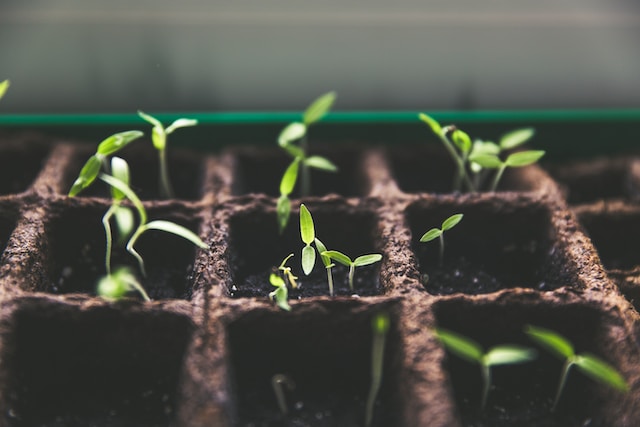¿What is green biotechnology?
Green Biotechnology, also known as Agricultural Biotechnology or Plant Biotechnology, is a discipline that employs techniques and principles of molecular biology and genetics to develop products and processes that benefit agriculture and the environment.
Within it, we can find:
1. Crop Improvement
Green Biotechnology is used to develop plant varieties resistant to pests, diseases, and adverse environmental conditions. This increases crop productivity and reduces the need for pesticides and fertilizers. Crop improvement through Green Biotechnology is a process that aims to develop plant varieties with enhanced characteristics to increase productivity and resistance to adverse conditions.
Here are some examples of how this is achieved:
Resistance to pests and diseases: Biotechnology allows the insertion of resistance genes into plants, making them less susceptible to pests and diseases. This reduces the need for chemical pesticides and decreases crop losses.
Tolerance to extreme weather conditions: Genes conferring tolerance to droughts, floods, or extreme temperatures are introduced into plants. This ensures a more stable yield even in challenging environments.
Improvement of nutritional quality: Plants can be genetically modified to increase their content of essential nutrients, such as vitamins and minerals, contributing to the improvement of food quality.
Increased yield: Optimization of characteristics such as fruit size, grain production, or growth rate is sought, resulting in higher production per unit of cultivated area.
Reduction of pesticide and fertilizer use: By developing crops resistant to pests and diseases, the need for chemical applications is reduced, providing environmental and economic benefits.
Adaptation to climate change: Green Biotechnology can accelerate the creation of varieties that adapt to changing conditions related to climate change, such as variable rainfall patterns or extreme temperatures.
Improving crops with Green Biotechnology is essential for addressing global challenges in food security and agricultural sustainability by enabling more efficient and sustainable food production.

2. Biotechnology in food
It is employed for the improvement of foods, such as the genetic modification of plants to increase their nutritional value or prolong their shelf life.
3. Production of bioplastics and biofuels
Biotechnology is used to develop genetically modified microorganisms that can produce biodegradable plastics and biofuels from biomass.
4. Environmental conservation
Green Biotechnology plays a crucial role in the conservation and improvement of the environment. Here are some ways in which Green Biotechnology contributes to environmental conservation:
Ecosystem Restoration: Biotechnology is used to restore degraded ecosystems, such as forests and wetlands, by reintroducing native plants and eliminating invasive species.
Bioremediation: Genetically modified microorganisms are used to break down toxic contaminants in soils and bodies of water, cleaning up contaminated areas.
Carbon Capture: Research in Biotechnology seeks genetically modified plants that can capture more carbon dioxide from the atmosphere, contributing to climate change mitigation.
Biodiversity Conservation: Seed preservation and assisted reproduction of endangered species use Biotechnology techniques for biodiversity conservation.
Sustainable Agriculture: Green Biotechnology promotes more sustainable agricultural practices by reducing the need for chemicals and improving efficiency in the use of natural resources.
Climate Change-Resistant Species: Biotechnology research aims to develop plant species more resistant to climate change, helping to preserve plant diversity.
Prevention of Extinctions: Introducing resistance genes into critically endangered species can help prevent their extinction by increasing their adaptability.
5) Sustainable agriculture
Green Biotechnology plays a fundamental role in promoting sustainable agriculture by combining biotechnological innovation with agricultural practices that are beneficial to the environment and society.
Here are some ways it contributes to sustainable agriculture:
Reduced use of pesticides and fertilizers: Genetic modification of crops can make them resistant to pests and diseases, reducing the need for pesticides and decreasing environmental pollution.
Less water usage: Biotechnology enables the development of crops more resistant to drought, helping conserve water in regions prone to water scarcity.
Improved Soil Quality: Crop rotation and the introduction of nitrogen-fixing plants in agriculture contribute to improving soil health and reduce the need for fertilizers.
Increased Productivity: Biotechnology is used to develop crops with higher yields, allowing for more food to be obtained from the same amount of land.
Development of Local Crops: Genetic modification can adapt crops to local conditions, encouraging food production in regions where they are consumed, reducing the need for transportation and carbon footprint.
Biodiversity Conservation: Biotechnology is used to preserve traditional and endangered crop varieties, contributing to genetic diversity.
Enhanced Foods: Green Biotechnology can increase nutrient content in foods, improving diet quality and reducing malnutrition.

6) Food security
It can contribute to food availability by enhancing crop resistance to changing climate conditions and diseases.
7) Ethics and regulation
Green Biotechnology raises ethical questions about genetic modification of plants and its impact on the environment. Regulation is crucial to ensuring the safety of biotechnological products.
Conclusion
Green Biotechnology, based on genetic manipulation and biotechnological tools, focuses on improving agriculture and environmental conservation. It provides solutions to increase food production, reduce the use of chemicals, promote sustainable practices, and address global challenges such as food security and climate change.

Through genetic modification of crops, ecosystem restoration, bioremediation, and biodiversity preservation, Green Biotechnology plays a crucial role in creating a more sustainable world and protecting our natural resources. However, it raises ethical and regulatory issues that must be carefully addressed to ensure its responsible and safe use for the benefit of society and the environment.







Related
Colors of Biotechnology
What is Red Biotechnology?